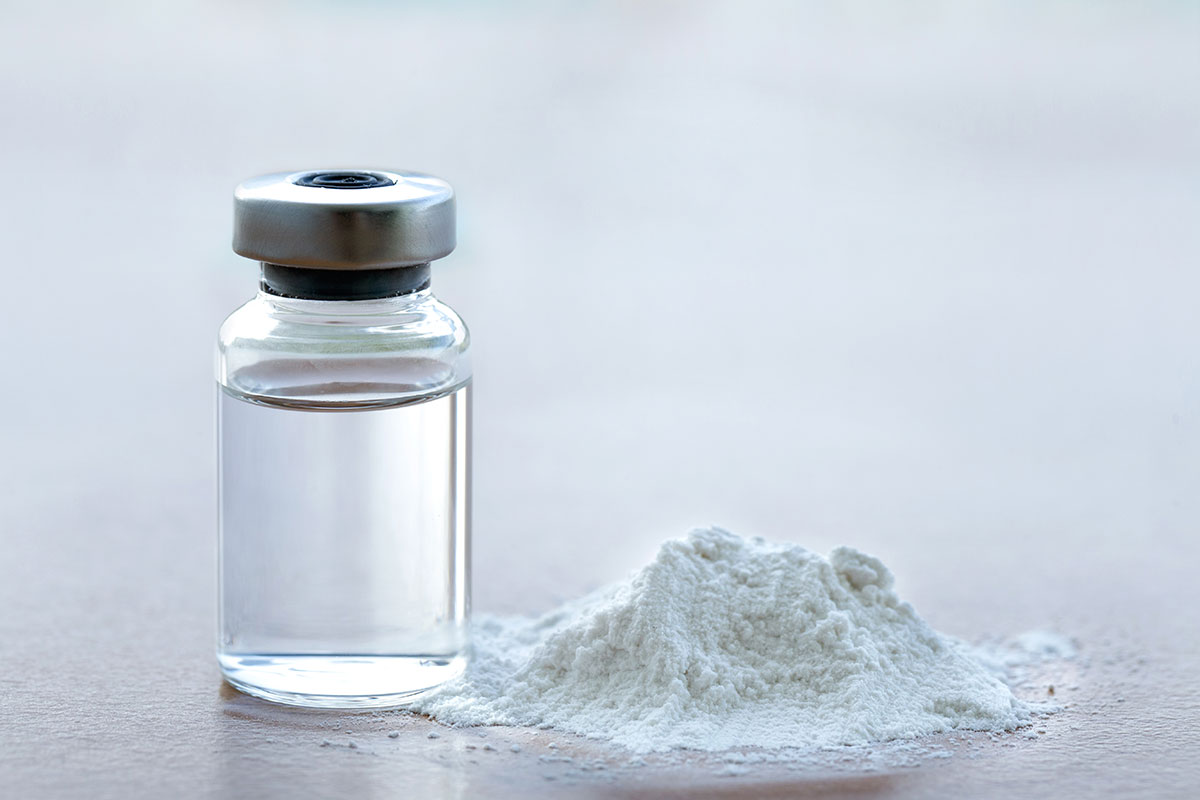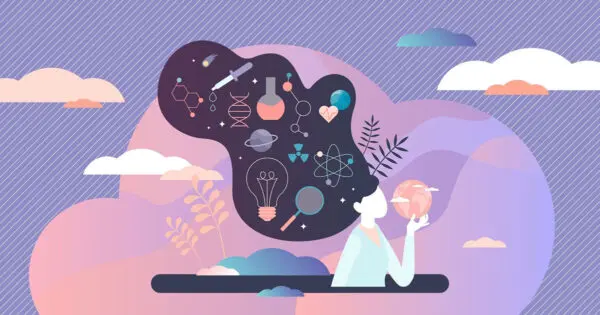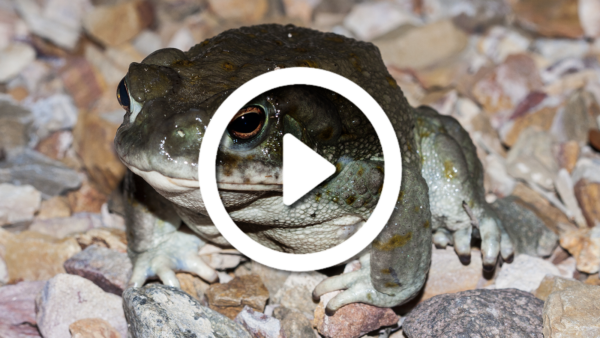Medical Editor: Dr. David Cox, PhD, ABPP
Ketamine played a role on the battlefields of Vietnam and the club kid rave scene. Now, the drug is being used as a treatment for those experiencing treatment-resistant depression, PTSD, suicidal thoughts, and a number of other conditions. While colloquially called a psychedelic, ketamine is technically a dissociative anesthetic, and is still used in operating rooms and ERs across the country. Keep reading to learn about this prolific drug, its many uses, methods of intake, and its role in psychedelic medicine.
What Is Ketamine?
Ketamine is a dissociative anesthetic with psychedelic properties. It was discovered in 1956 and approved in 1970 as an anesthetic agent derived from phencyclidine. Ketamine proved useful in battlefield settings such as Vietnam where it was used extensively. Ketamine maintains hemodynamic stability, or stable blood flow, which is crucial when treating trauma. It’s listed on the World Health Organization Model List of Essential Medicines, which names medications considered to be most effective and safe while meeting a health system’s most important needs.
It’s also used as an alternative to opiate pain-relievers. More recently, ketamine is showing potential in the treatment of depression, PTSD, suicidal thoughts and other mental health conditions. It is currently the only legal drug used in psychedelic medicine
Ketamine is also used as a recreational drug due to its hallucinogenic and dissociative effects.
What Is Ketamine Used To Treat?
While ketamine is originally an anesthetic, today, in addition to medical and surgical use it is used to treat depression, PTSD, and more. While it’s not the first line of treatment, a growing body of research suggests it can be beneficial for those experiencing depression and other mental health conditions who do not respond to traditional antidepressants such as SSRIs. Below are the primary indications for ketamine.
Medical and Surgical Use
Although it’s often referred to as a psychedelic, ketamine is technically a cyclohexanone derivative with analgesic and anesthetic properties. While more research is needed to fully understand its mechanism of action, evidence suggests that ketamine works by exerting complex pharmacological actions including inhibition of biogenic amine uptake, binding to opioid receptors, and inhibition of N-methyl D-aspartate (NMDA) receptors. As this involves the spinal NMDA receptors, which function in the process of central sensitization, ketamine can reduce pain and bring about sedation.
Because ketamine is unlikely to cause low blood pressure (and possibly even prevent it), it can be especially useful in patients with a severe head injury, when low blood pressure is quite dangerous. Because it is considered a relatively safe anesthetic and pain-reliever, it is often frequently used in pediatric and veterinary medicine.
Depression
At subanesthetic doses, ketamine can be effective as a treatment for depression. In particular, research suggests that ketamine can provide rapid relief to people with treatment-resistant depression. It is estimated that 10-30% of people with depression are resistant to the beneficial effects of traditional antidepressants. Even for those who do respond, antidepressants such as SSRIs can take weeks to take effect. Because ketamine treatment can show results in a matter of hours to days after administration, it is particularly useful for patients experiencing suicidal thoughts or ideation. There is also evidence supporting its use for bipolar depression.
While the most noted ketamine studies for depression were done off-label using intravenous infusions, in 2019, a nasal spray called Spravato (esketamine) was approved for use by the Food and Drug Administration (FDA).
Anxiety
While most of the mental health research on ketamine relates to depression, with which anxiety is often a comorbid condition, there are indications that ketamine may help treat anxiety as well. A 2017 study in 18 adults with social anxiety disorder found that ketamine resulted in a significantly greater reduction in anxiety relative to placebo. However, more research directly pertaining to anxiety disorders is needed.
PTSD
Much like depression, the current treatments available for PTSD, such as SSRIs, have limited efficacy. As a result, ketamine is increasingly being used by people experiencing post-traumatic stress disorder.
In a 2021 study, patients received either ketamine or a placebo six times over two weeks. The results suggest that ketamine infusions can reduce symptoms in chronic PTSD patients. Of the ketamine patients, 67% experienced symptom relief, compared with 20% in the placebo group. The result lasted a median of 27.5 days, suggesting the use of booster infusions to maintain results. For patients who receive ketamine infusions, the typical treatment protocol can be an initial six rounds of treatment, often coupled with psychotherapy, and return visits for boosters as needed.
Chronic Pain
As ketamine clinics pop up across the country, so do advertisements for ketamine for chronic pain relief. While it’s believed that ketamine may treat chronic pain due to ketamine’s ability to prevent central sensitization further evidence is needed.
A 2020 study refuted the researcher’s hypothesis that ketamine provides relief for neuropathic pain and cognitive–emotional benefits versus the placebo. The same study hypothesized that a combination of ketamine with magnesium may have an additive effect, however, this was also not substantiated.
Research does support the use of ketamine for acute pain, especially in emergency rooms setting as a stand-alone treatment or supplement to opioid treatment.
Substance Abuse Disorder
While ketamine can be a good alternative for morphine in surgical patients with substance use disorder, more research is needed before conclusions can be drawn on its efficacy in treating substance use disorder.
Obsessive-Compulsive Disorder (OCD)
A 2020 study on ketamine for treatment-resistant obsessive-compulsive disorder, suggested that there is some evidence that ketamine could be helpful. Out of 14 adult patients, one showed a dramatic positive response, two showed a moderately positive response, and 11 showed no clinical improvement. It’s promising for people who don’t respond to traditional OCD medication such as serotonin reuptake inhibitors, but more research is needed before ketamine becomes the go-to treatment.
Migraines
As ketamine clinics increasingly pop up across the country, many are also advertising the treatment as a cure for migraines. There is some evidence that ketamine can treat migraines, but more research is needed on the topic.
Ketamine Methods of Intake
While most of the research on ketamine for depression uses infusions, the only FDA-approved method of intake is a nasal spray. However, ketamine can also be taken orally, sublingually, and through intramuscular (IM) injections. While it’s not suggested in a medical setting, recreational users often snort ketamine. Below are the prominent methods of intake as supported by medical research.
IV (Infusions)
Landmark studies on treatment-resistant depression use an IV drip, or a ketamine infusion, as the method of intake. It’s one of the most common ways to use ketamine therapeutically and is conducted off-label, meaning while legal, it is not the FDA-approved method of intake. However, infusions are considered effective as they allow ketamine to bypass the digestive system and enter the bloodstream directly.
Infusions can work quickly. In a 2019 study, patients with treatment-resistant depression received six infusions over the course of two weeks. There was significant improvement after the first dose which continued through the month following treatment. Many people receiving ketamine infusions go in for the initial six rounds and then come back for boosters as needed, ranging from every week to every two months.
Usually given in a ketamine clinic or medical spa environment, the infusions can last anywhere from 40 minutes to an hour and a half. The dose is determined by weight and need, and the sessions are often coupled with psychotherapy and integration work.
Injections
Another less researched method of ketamine intake is intramuscular (IM) injections. Case reports from 2013 suggest that IM could offer the same quick and effective depression treatment as a ketamine IV treatment. While more science is needed to support the efficacy of IM ketamine administration, it provides a welcome alternative for patients disinterested in or unable to use an IV line.
Intranasal
Currently the only FDA-approved ketamine method of intake for treatment-resistant depression is a nasal spray of esketamine (Spravato). It can be self-administered by the patient under the supervision of a practitioner to ensure the patient’s safety. Because it can have side effects such as dizziness, disorientation, and has the potential for dependence, it’s crucial that patients work closely with their providers while taking this medicine.
Ketamine consists of two molecular forms, R- and S-ketamine. Esketamine contains the S- form of ketamine, which research suggests has the similar antidepressant effects to R-ketamine. While R-ketamine is an older and well-known medication available generically, esketamine is a newer patented medication.
Orally
Oral administration of ketamine is one of the most practical methods of intake as it can be done at home, and is available in generic form, so is less expensive than the nasal spray. Tablets can be swallowed or placed under the tongue sublingually. However, as reported in a 2019 study, oral administration has its downfalls. Because only 20%-25% of orally administered ketamine reaches systemic circulation, it isto dose than an infusion. The decision to administer ketamine orally versus using infusions or intranasal spray should be made between a patient and their healthcare provider.
What Risks Are Involved In Ketamine Treatments?
The side effects of ketamine depend on a number of variables including dosage and method of intake. As a result, it is important that you only use ketamine under the supervision of a provider. Side effects of ketamine treatment include feeling out of body dizziness, altered perception, and euphoria. The most common side effect is nausea and vomiting.
It is difficult to overdose on ketamine, as demonstrated by its safety in anesthesia. As mobility may be impaired, do not drive after taking ketamine, and stay in a safe space while taking your medicine, ideally with a supervisor. Ketamine can be habit-forming, at least psychologically, as demonstrated by its use as a recreational drug. Overuse of ketamine can result in bladder, urinary tract, and renal damage, which is why it’s crucial to only use the medicine under the supervision of a trained clinician.
How Much Does Ketamine Treatment Cost?
Cost is one of the biggest barriers to ketamine treatment. Insurers don’t typically pay it, and ketamine infusions can cost between $400 to $2,000 per treatment. Esketamine nasal spray can cost $590 and $885 per treatment session. As a result of this price tag, often doctors will work with a compound pharmacy to create an off-label ketamine nasal spray for patients at a lower price point.
Ketamine-assisted Psychotherapy
Many ketamine clinics which offer services such as infusions for treatment-resistant depression include integration work with a therapist. However, because this is a new and largely unregulated territory, the quality of services may vary widely.
A 2018 study found suggests that small doses of ketamine taken in-office with a therapist present can lower a person’s inhibitions, allowing them to be more comfortable discussing trauma and accessing difficult emotions. The researchers acknowledge the benefits of both using ketamine in talk therapy with a provider present and in conjunction with out-of-office administration for treatment-resistant depression, PTSD, and other conditions.









